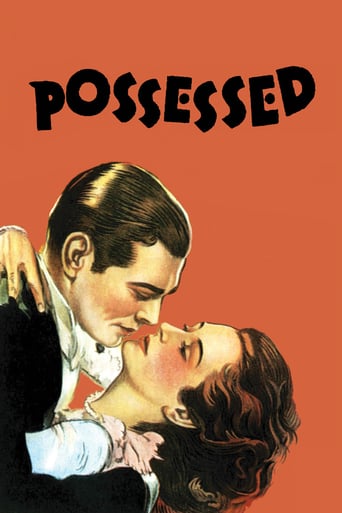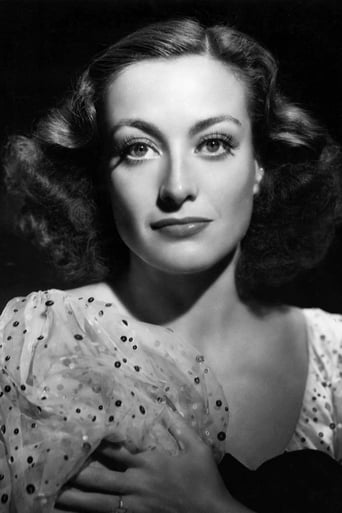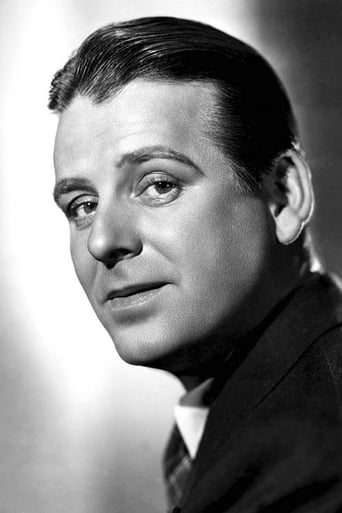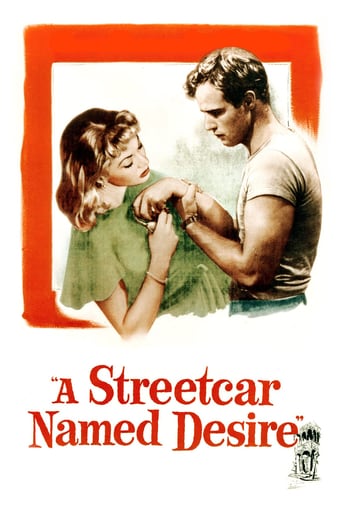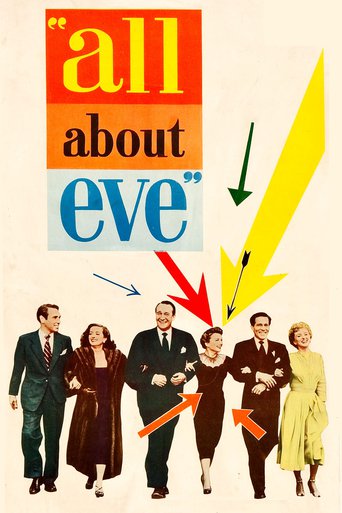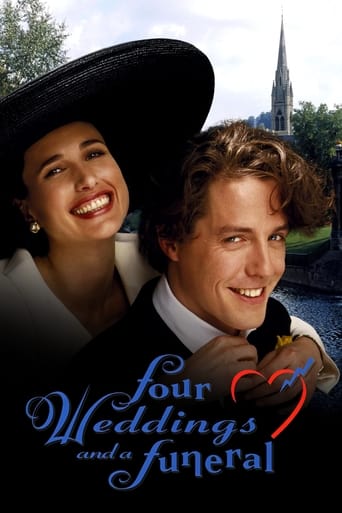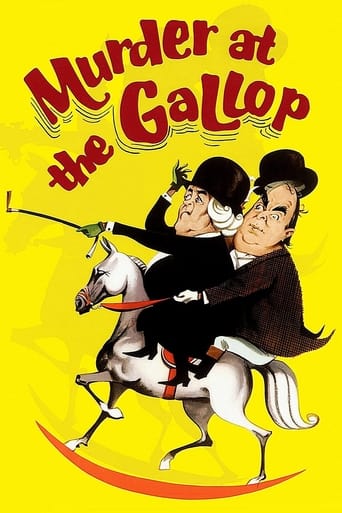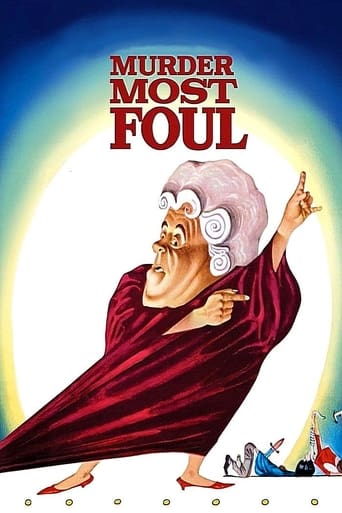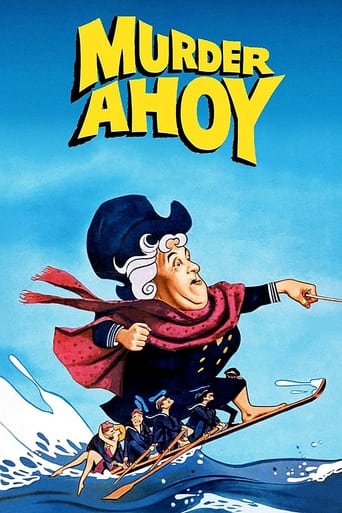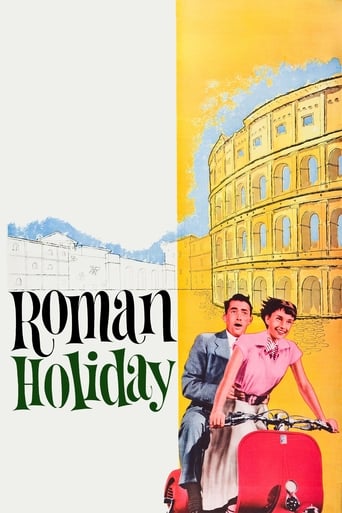Possessed (1931)
Marion is a factory worker who hopes to trade the assembly line, for a beautiful penthouse apartment. Mark Whitney, a wealthy and influential lawyer can make her dreams come true, but there is only one problem, he will give her everything but a marriage proposal. Will this affair ever lead to marriage?
Watch Trailer
Free Trial Channels
Cast


Similar titles
Reviews
This movie was so-so. It had it's moments, but wasn't the greatest.
Excellent and certainly provocative... If nothing else, the film is a real conversation starter.
This is one of the best movies I’ve seen in a very long time. You have to go and see this on the big screen.
One of the best movies of the year! Incredible from the beginning to the end.
Adapted by Lenore Coffee from a 1920 play, 'The Mirage', by Edgar Selwyn, 'Possessed' is a shameless piece of pre-code escapism from MGM largely free of the redeeming social comment to be found in most contemporaneous films from other studios. It became one of the top-grossing films of the grimmest year of the Depression, when countless women in dead-end jobs married to no-hopers in small towns doubtless found it a tonic to see Joan Crawford break her shackles, go to the Big City and quickly become showered with nice clothes, expensive jewelry and a luxurious apartment. (Less enthralled was the British censor, who banned the film.) Billed above the title, even in her youth at 25 going on 40 Crawford was by no stretch of the imagination a great beauty, which I suspect was part of her appeal to female audiences; if she could get her claws into Clark Gable and his money ("I'm glad you're rich, I couldn't waste my time on anyone poor!") and become an elegant courtesan, then maybe there was still a chance for them.SPOILER COMING: Naturally she starts wringing her hands at the lack of security or respectability provided by this arrangement, and when she learns that their relationship may hurt his run for Governor makes the usual big show of Not Really Loving Gable in order to make one of those Noble Self-Sacrifices That Only She Knows the Truth About. Fortunately all is resolved in an extravagantly bizarre finale at a huge political rally (which looks as if half the film's budget was spent on it), which initially bears a striking resemblance to the one in 'Citizen Kane' crashed by Boss Jim Geddes. This time the uninvited guest is Crawford as 'Mrs. Moreland', and instead of ruination as in 'Kane' we get an abrupt reconciliation and a happy resolution for Gable & Crawford. The End.
I'd have to look up the stats to make sure, but I believe that Joan Crawford may be one of the only actors, certainly the only major star I can recall off the top of my head, who starred in two completely different films with the same title. This must have occurred to Crawford at the time, but it's also interesting to see just how different the films are while at the same time there *is* one aspect that is similar, though unintentional, and separated by not only a decade and a half but the technology of cinema itself. Also, both are good films, if not quite great landmarks (and this one featuring a couple of memorable scenes I'll get to shortly) Unlike the 1947 Possessed, where Crawford was a woman who is found wandering the streets totally nutter and while half in shell-shock tells the story about her dashed hopes of love with Van Heflin, the 1931 Possessed, directed by Clarence Brown and featuring Crawford's oft-MGM co-star (and occasional lover) Clark Gable, is a simple little movie with a strong dramatic core about a young woman who leaves her dispiriting midwest small-town working-class life to make something of herself in New York City, finds well-to-do political aspiration-filled Gable, three years go by, and they may get married... until the man from before in that small town she was with reenters the picture. The 47 film was a little more sophisticated in some of its filmmaking craft by the sheer fact that it was so many years into the (classic Golden-age) Hollywood sound era, not to mention some film-noir aesthetic, while Brown is still seeing what can be done with this darn sound technology, and the script reflects this simplicity as well.This doesn't make it bad at all, on the contrary the interest in watching this film is to see how these two stars play off one another - it's a drama but there's real chemistry between them, and Gable especially shows his acting chops in the last twenty minutes or so of the film - and that once this love triangle starts to unfold, Brown puts in a few touches to make it visually striking. There's one moment where Marian and Wallace Ford as Al Manning where he proposes to her while they're on a merry-go-round (who knew adults did that back then, guess I'm the fool to think otherwise), and while the background keeps moving, we're focused on these two actors as Crawford's face changes to concern (and her words try to mask this) and Ford is just a happy-go-lucky kind of guy. And the way Brown uses close-ups is strong too, like when Marian is uncertain about things involving Mark Whitney.The two memorable set pieces are contrasts in how we see a character react to the world around them; Crawford's Marian very early in the film (this is after expressing her uncertainty to Al that she wants to stick around in town and live *this* life he wants for her) sees a train going by slowly, and she sees into the cars. Inside the train cars is exuberance, people dancing, champagne flowing, and the way the train cars are going by it seems like she's getting a vision into another place in time, or even her desires and dreams manifested (are they real? who cares? they're there). This scene, by the way, was later used as a good example of what desiring things in visual terms means in The Pervert's Guide to Cinema.The other memorable portion is the climax and ending, where Mark Whitney is giving a political speech - he's running for governor and a number of things have happened up to this point for him to run, which I won't get in to as it reveals a spoiler I'd rather leave free for you to see in regards of the love triangle - and Marian is there in the crowd (though Mark doesn't know it). How Brown cuts around to some of these faces, how we see this giant space, how a certain stack of papers are thrown out asking who the "Mrs. Whitney" is, and then when Crawford stands up, this shows some excellent editing and pacing on Brown's part and makes for a dynamic conclusion - a sad one, as well, though I won't say why that is either.There are a few creaky parts to the film, and the script may be *so* simple as that one might wish it were a little longer - it runs a very slim 76 minutes, and there's a time jump of around three years from 1928 to 1931, and, surprisingly (and I'd think audiences at the time, who did make this a hit, would've wanted to see something of this), there's not a single mention of the depression, or if it affected Whitney and his political/business affairs. But the draw of the film is Crawford and Gable (and Ford isn't too bad either, though his character makes him fairly one note until his last scene), and they're excellent either together or apart. Just that scene alone where they meet for the first time, where Marian is first trying to ask the man she met in her town (the only one she knows) about any work or opportunities and he tells her to shove off, she sticks around in the hallway and then comes back in and asks Gable's Mark out... wow does that have a good charge.So, no, they're not quite the same movies - we never see Marian go totally cuckoo like her character in the 47 film - but they are both women who want some kind of status in society, and it involves then men that, at the time, made it so they had little recourse else (in one film she's a nurse and that's about it, in the other she's... well, what would she do without the men in her life there?)
Having left school at the age of 12, Joan Crawford's Marian never learned to spell regret. And as perfect as the are together, her handsome attorney lover Clark Gable doesn't want to marry her to risk finding out her imperfections. It's a perfect relationship, but as much of a lady Joan becomes after leaving her factory town, she desires that quality called respectability. As much of an obvious gold digger she is, she's open about it, and that's what Gable likes about her, tired of the phoniness he's encountered before. But as his reputation grows and his political clout increases, she's a danger to him, something she refuses to be. Almost semi-autobiographical, this parallels Crawford's rise up the ladder from uneducated chorus girl to extra to rising starlet, to by this time, superstar. It's also Gable's first hit, and the sparks fly from the moment she intrudes on Skeets Gallagher's business meeting and wins him over. Earlier, a drunken Skeets advised her to get out of her factory town and board the train to the other side of the tracks. If the sight of her tired mother Clara Blandick doesn't convince her that it's time, it's content suitor Wallace Ford. By the time Crawford has gotten in to deep, she fights the tears back as she's too far in, and her only choice to save him and her self respect is to get out. This plot line sounds like the special dialog added to the Judy Garland speech in the middle of "Dear Mr. Gable". This isn't just your typical Joan Crawford tearjerker. There is something special about this film, for me not just being one of the very first Crawford film I recall seeing on home video, but in its tale of moral struggle and misplaced ambition as well. Crawford isn't just some beautiful ice statue; she has all the right ingredients for super-stardom, and under the direction of veteran director Clarence Brown, reaches it with no yellow brick road to skip down. With this film, her legendary status became assured.
Possessed (1931)A wonderful Joan Crawford film not to be confused with her second, completely unrelated, also wonderful movie of the same title (yes) from 1947. This one, to be sure, also stars Clark Gable, and it dates from the years when Gable and Crawford had an intermittent, steamy affair. The chemistry is good, the filming excellent (and sometimes breathtaking), and the overall story a lively pre-code, Depression-era tale of succeeding.But success at what cost? That's the key. You love Crawford's rise, and her methods are sincere even if not as sweet and homespun as the first scene would imply. It's not that she's corrupted, but that she discovers the excitement of the big city, and the truth that there really is sincerity there as much as in the little town she came from.Gable represents every girl's dream, of course. He's suave, warm, funny. And rich. Their interactions are natural throughout, and the pace lively (as most of the famous pre-Code films are).The filming is excellent, including a somewhat famous long take of Crawford, near the beginning, watching a train slowly amble by as a parade of different scenes unfolds through each window. It's worth seeing just for that scene alone (if you like great cinematography, and the aura of old Hollywood).Clarence Brown is the uncredited (!) director here, and he's terrific. See "A Free Soul" made at the same time for another (even better) film showing off his ability to make dialogs crisp and true. (He's more famous for his many movies with Garbo, but he did a slew with Crawford.) If you think there is a predictability here, you're going to be partly wrong. See this one, not because it's a classic, but because it's very very good, and forgotten. You will have trouble finding a good version, however. The one I found was on iTunes and it was so terrible (harsh tones, highlights so washed out you couldn't see their faces in many scenes) I don't recommend it. (I wrote to complain and got a quick refund, an apology, and a promise to look into it. I don't know if that fixed the problem, however, in Spring 2014.) Anyway, find a good copy somehow. Do it.

